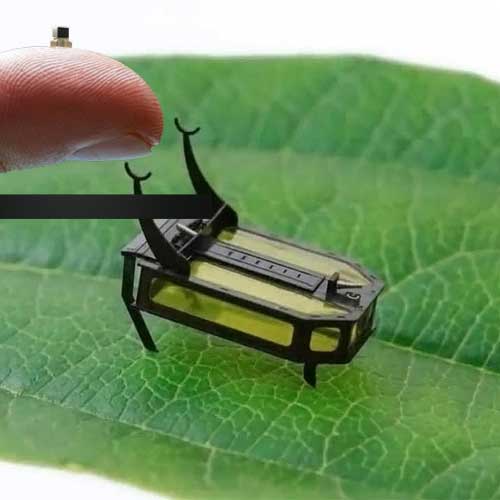The role of micro-robots in smart agriculture
Can robots, especially micro-robots, be used in modern agriculture? If so, what would be the application of micro-robots?
Continuous examination of soil and cultivation environment with the help of micro-robots
The cultivation environment of plants and agricultural products, which is mainly soil, is a very important factor for plant growth and health. If the soil is not suitable, the plant cannot grow well and reach the stage of product yield, which is a potential problem in agriculture. For example, in this picture, you can see an onion that has gone bad and can no longer yield a crop.

Plant and crop diseases have many causes, but 95% of these problems are due to unsuitable soil in the cultivation area. Soil analysis requires a lot of expertise and experience, and in addition to specialized tools and various sensors, it is necessary to examine all aspects such as soil pH, levels of hydrogen and oxygen in the soil, soil moisture levels, and the presence of various parasites to identify any problems and provide solutions to improve the soil quality for better plant growth and productivity, and to reduce agricultural losses.
This is where micro-robots can be used instead of using various sensors. Micro-robots are much better than stationary sensors in every way, and the first reason is that a sensor, no matter how advanced, can only report on the condition of the area where it is installed, while a small robot equipped with various sensors can scan the entire area, report any problems, and even be equipped with tools to solve the problems.
For example, if the pH level of the soil in a certain area of the land changes for any reason and is different from other areas, micro-robots can control and adjust the pH level of the soil by adding or subtracting certain substances. Therefore, a number of micro-robots that traverse the entire agricultural land can easily identify and solve problems before serious damage and problems occur for agricultural products.
The control of micro-robots by a central system
In addition to being able to be guided independently, the micro-robots we talked about can also be controlled and directed by the intelligent agricultural central system. Also, all the data collected by these robots on the state of the soil and land will be sent to the same central system to be processed and accurately determine the state of the soil and land. Different strategies have been planned for different situations to implement a flawless system, as if this system is not properly managed, it can lead to various problems.
In general, these micro-robots will be like moving sensors and will constantly examine the condition of the soil, the condition of plants in terms of disease, and all other related factors in order to have a complete farm with healthy agricultural products and without any losses.
Regarding the startup and maintenance costs, it should be noted that these factors will not impose a high cost on farmers, as they will use very inexpensive and low-energy-consumption microchips. In general, low-cost, high-use components will be used in the construction of these micro-robots.

